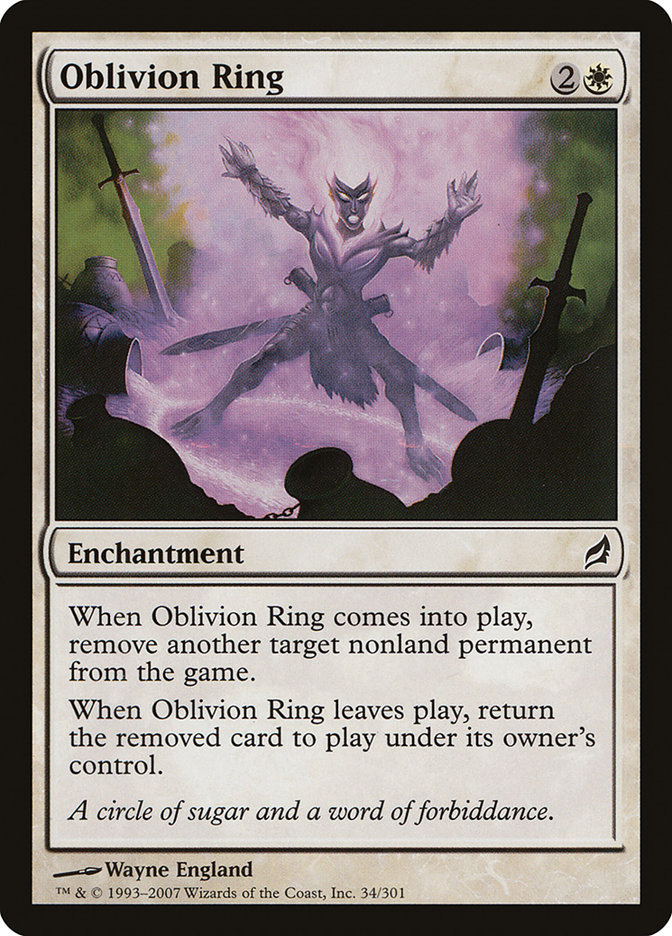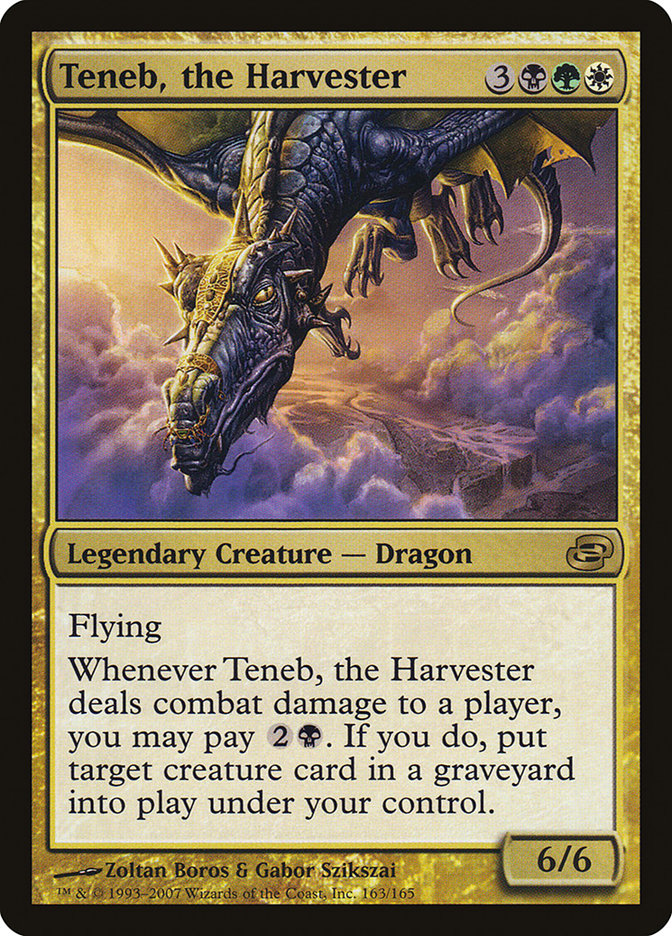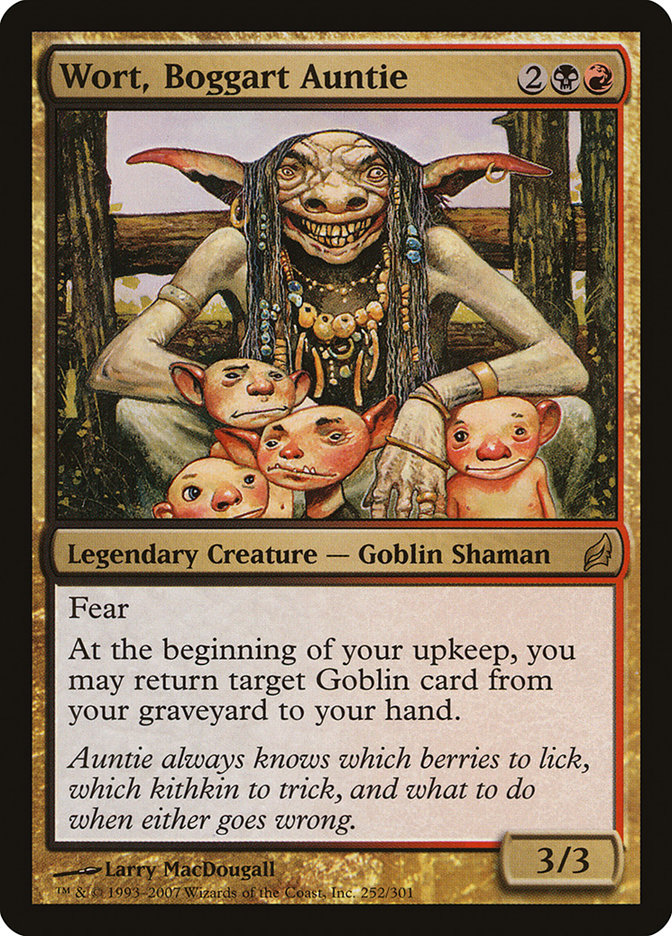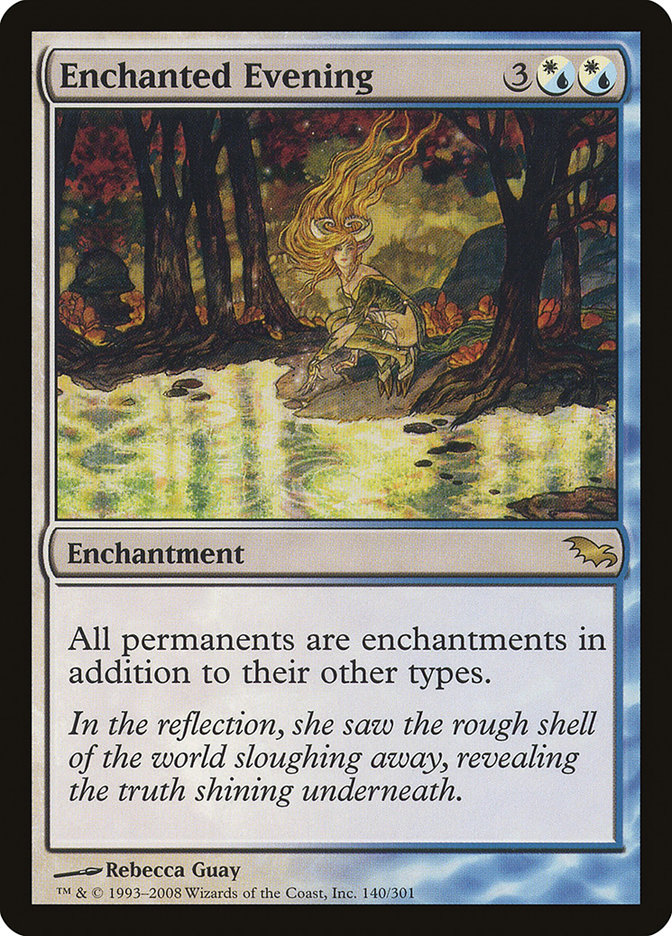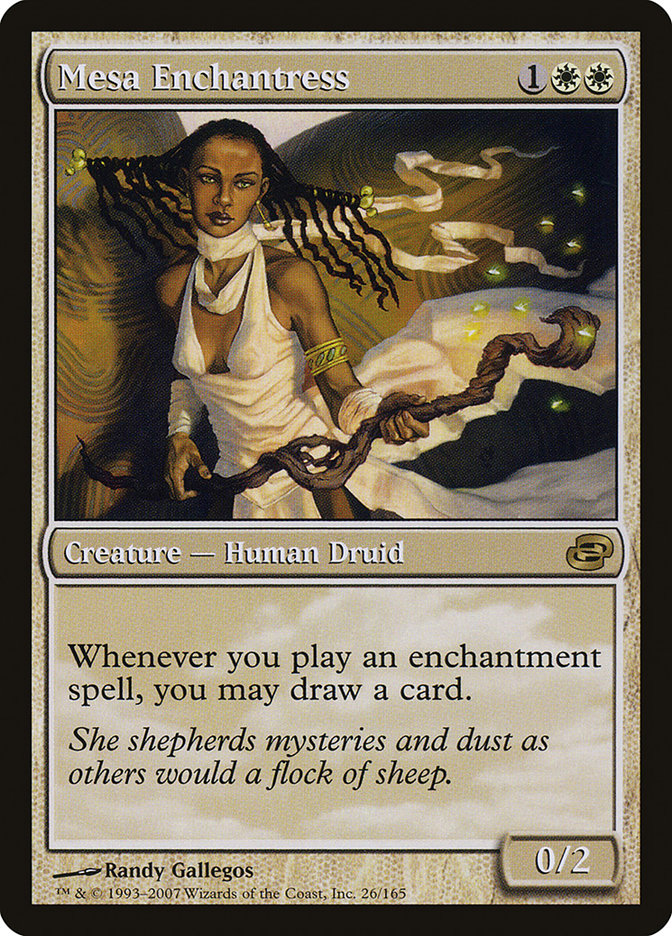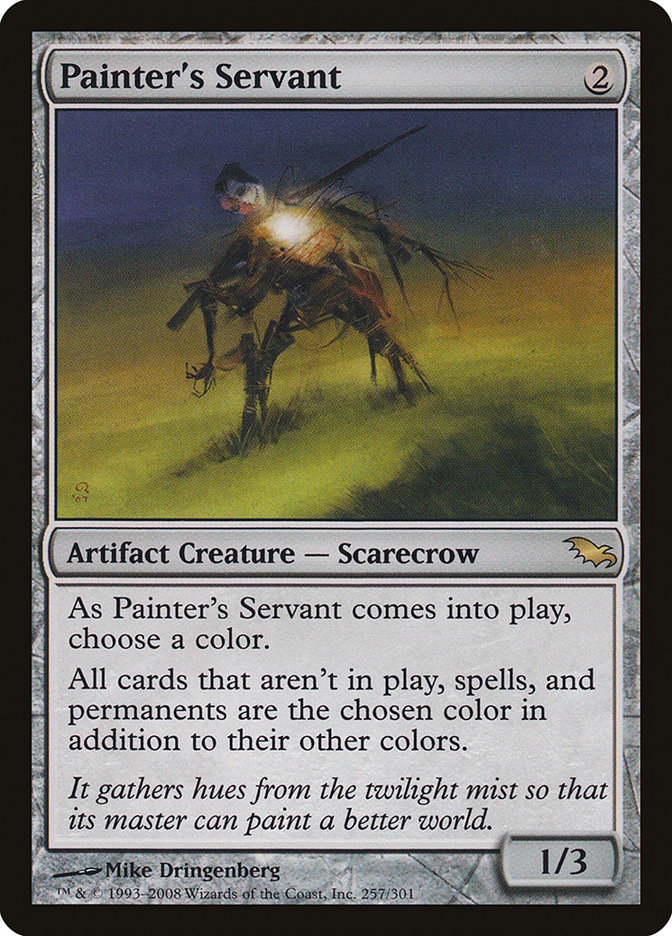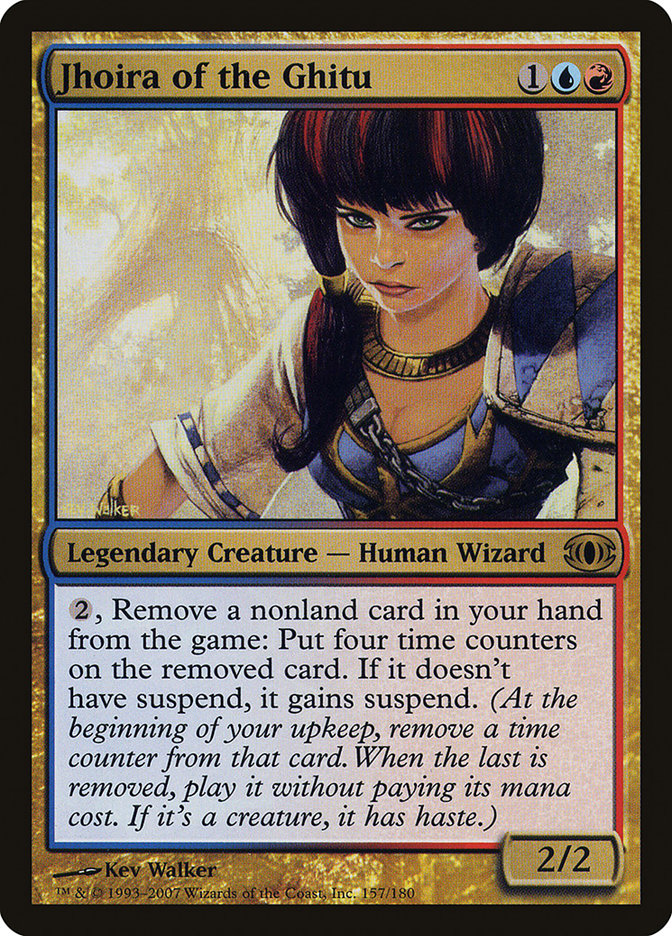This is it!
Today is the final matchup in the Battle of the Blocks series, where the last block to leave the ring takes home the moniker of the best block for the Commander format. Lorwyn-Shadowmoor block entered this competition as the #1 seed and proceeded to cut a swath of destruction through each of its challengers.
Two weeks ago Lorwyn-Shadowmoor block faced a monumental test when the denizens of Ravnica decided to attack the lovable kithkin, merfolk and faeries of the plane of Lorwyn. Return to Ravnica block started out strong with a slew of great staples (even one that just got banned in Deathrite Shaman) and beat Lorwyn-Shadowmoor block in the commanders section, forming a position that looked to upset the #1 seed.
Lorwyn-Shadowmoor block retaliated quickly with superior flavor and a larger number of unique spells that make the Commander format operate at a fevered pace in order to quell the upstart Return to Ravnica block and arrive in the finals of our competition. Lorwyn-Shadowmoor block’s close victory over Return to Ravnica block brought both the great aspects of this extra-large competitor to light as well as some dark spots it would rather leave in a dimly lit cave in Shadowmoor.
Lorwyn-Shadowmoor’s greatest advantage going into this final battle is its contribution to the many types of decks within the Commander format. Players turn to Lorwyn-Shadowmoor block for tribal based approaches to the Commander format and are stirred into a flicker frenzy whenever the evoke mechanic is mentioned within the other 99 cards. What was once a strength of Lorwyn-Shadowmoor block, its legendary creatures, has turned into a surprising weakness at the top levels of competition. Lorwyn-Shadowmoor block has earned its place in this final bout, taking on the surprisingly tough Time Spiral block for a shot at the title of the best block for the Commander format,
Time Spiral block entered this competition as an innocuous mid-card looking to scrape wins away from opponents with its exceptional card design and powerful commanders. Last week Time Spiral battled back against the guilds of the original Ravnica block, putting the fan favorite into the dumpster with unrelenting force. Ravnica stole the Strategies section from Time Spiral block through the strength of Life from the Loam and Doubling Season, only to flop like an asphyxiating fish and lose every other section to Time Spiral block in an absolute massacre of a Top 4 fight. Time Spiral has proven itself worthy of a finals birth due to its stacked staples section filled with color-shifted powerhouses and powerful legendary creatures that bind the history of the format with generals we still see today.
This wasn’t the matchup that many people thought would make it to the finals, but it’s a matchup that I can’t wait to dive into and find the victor!
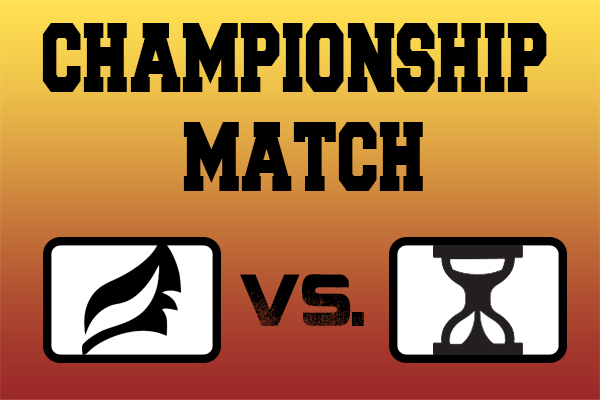
Staples
Ten Staples From Time Spiral Block
1) Damnation
2) Gauntlet of Power
3) Coalition Relic
4) Return to Dust
5) Harmonize
6) Venser, Shaper Savant
7) Terramorphic Expanse
8) Vesuvan Shapeshifter
9) Krosan Grip
10) Draining Whelk
The Commander format is forged in the staples that compose the first twenty or so cards of Commander decks. "Destroy all creatures. They can’t be regenerated," is a timeless couplet for Magic players who love their value. The effect that Damnation has on a board is staggering, turning a dominant board position into wisps of ozone for a paltry four mana. The underlying power of Damnation, especially in a format as swingy as Commander, is its low mana cost allowing the player who wrested control of the board to play the first threat and assume the driver seat for the rest of the game.
Gauntlet of Power is a through the looking glass facsimile of the twenty year old Gauntlet of Might, whose lifted color restrictions grant it a high position in monocolored decklists. Although it has recently been outmatched by the non-symmetrical Caged Sun, Gauntlet of Power players can use this balanced effect to gain alliances and control the flow of the game while playing additional spells each turn due to the extra mana.
Ten Staples From Lorwyn-Shadowmoor block
1) Mulldrifter
2) Filter Lands
3) Oblivion Ring
4) Garruk Wildspeaker
5) Reveillark
6) Vivid Lands
7) Jace Beleren
8) Mana Reflection
9) Farhaven Elf
10) Austere Command
Fixing, fixing, and more fixing are required in a format dominated by greedy mana bases trying to cast spells like Cruel Ultimatum and Progenitus. The Vivid lands and Filter lands of Lorwyn block are two antidotes that keep Commander healthy from the sickness of mana screw. The Vivid lands are especially important for people playing five-color mana basses that don’t want to break the bank on the land base. Another low-priced staple is Oblivion Ring, whose downside of being a removable enchantment is commonly parlayed into an upside by constantly recurring the enchantment or blinking it in response to its enters the battlefield trigger to send a permanent into unescapable exile.
A final nod in this section goes out to the original five planeswalkers, two of which still see heavy play in Commander. Garruk Wildspeaker and Jace Beleren both see repeated play in the Commander format due to their low casting cost and the large amount of decks they can slot into. Garruk Wildspeaker is the best designed green planeswalker, with three abilities that blend beautifully into one another creating the perfect mold for all other planeswalkers to copy. Jace Beleren finds himself on this list because of his frequent play in both control and aggressive shells as repeatable card advantage that can sometimes garner friendship if Jace Beleren transforms into "party Jace" and starts ticking up, gifting everyone cards.
Verdict: Mulldrifter and friends are simply outclassed by the heavy hitters from Time Spiral block. Damnation, Coalition Relic, and Gauntlet of Power have made such an impact on the building blocks of Commander decks that they carry Time Spiral block to a solid win in this section.
Commanders
One of the greatest limiting factors within the Commander format for years was the inability to play a wedge-colored deck due to a lack of generals of those colors. Time Spiral block broke down this final color barrier by bringing five bloodthirsty Dragons into Commander to rule the skies and guide the formation of wedge-colored decks for the future. Teneb, the Harvester brought the first glimpse at the now established recursive Junk deck, and Intet, the Dreamer roared into the format, heralding the start of RUG value ramp.
Beyond the epochal importance of the Planar Chaos Dragons, Time Spiral block created some fantastic legendary creatures that still see a nice mount of play within the Commander format. Jhoira of the Ghitu is an annoying but popular commander, and Norin the Wary has become the spirit animal for players who have fully embraced the chaos.
Lorwyn-Shadowmoor block also brings some heat in this section, with the extremely popular Rhys the Redeemed leading the charge. Rhys the Redeemed fought his way into the pantheon of top tier generals when he established his position as the best G/W Token commander in the game. Rhys’ ability to create and multiply tokens without investing drawn cards transforms this lowly one-power Elf into an engine of nearly unmatched proportions out of the command zone. Combine this built-in engine with a dash of tribal synergy and Rhys the Redeemed was the top general and one of the most feared Elves for a very long time.
The other generals to make a splash in Commander from the plane of Lorwyn are two of the coolest five-toughness creatures in the format: Oona, Queen of the Fae and Doran, the Siege Tower. Doran, the Siege Tower’s static ability allows players to create unique decks that focus on the high end more than Sir Mix-A-Lot ever did, bringing cards like Slagwurm Armor and Silklash Spider into the spotlight. Conversely, Oona, Queen of the Fae is played with little focus on creatures in the other 99 cards and instead plays a very controlling game, using the activated ability of Oona to demolish both the decks and life totals of her opponents.
Verdict: Time Spiral block’s simple color shifting of the Invasion block Dragons was a humongous boon to the Commander format, allowing for wedge decks to finally see play. This color barrier annihilation combined with the repeated play of the legends from this block lead it to another win in this category. Lorwyn block’s Commanders couldn’t hold up to the onslaught of shapeshifting dragons and crumpled into a pile of elemental dust.
Strategies
In the final fight, the strongest element of these blocks comes forward, and Lorwyn-Shadowmoor block’s greatest strength lies in its additions to the tribal side of the Commander format. Starting with the development of the classic tribal creature types, Lorwyn-Shadowmoor block heavily accentuated the Elf creature type by increasing the number of quality legendary creatures, token-making spells, and tribal lords to an unstoppable mass of pointy eared green bodies.
The Goblin tribe finally found full expansion into black with the inception of Lorwyn block, grabbing a new lord in Mad Auntie and a new recursive legendary creature in Wort, Boggart Auntie. The greatest strides for the development of the tribal strategy in Commander took place away from the established and germinated from the underused. The changeling mechanic suddenly increased the number of creatures for every creature type, allowing off-kilter tribes to finally grab a piece of the spotlight.
Stepping away from tribal, Lorwyn-Shadowmoor block also contributed to more refined strategies like enchantment-based decks and blink-based strategies. Idyllic Tutor and Enchanted Evening are two incredibly important parts of the enchantment archetype; one is a low-priced tutor for increased redundancy, and one can wipe your opponent’s entire board or steal it with an Aura Thief. Decks that love to flicker in and out of the field can thank the evoke mechanic from Lorwyn block for their heavy contribution to this deck archetype, bringing cards like Mulldrifter and Reveillark to the table. Additionally, enablers like Mistmeadow Witch and Turn to Mist call Shadowmoor their home and are common inclusions in this strategy.
In no way can Lorwyn block call enchantments and blink effects their own when Time Spiral block contributed just as much to each of these popular deck archetypes. Idyllic Tutor is great for searching a deck, but Time Spiral block rare Mesa Enchantress allows players to fly through their deck by turning each enchantment into a cantrip. Other support cards for the enchantment lovers of the Commander format, Arcanum Wings and Daybreak Coronet, bring an extra punch to the strategy and showcase the unique design that coats this entire block.
What would a blink deck be without its namesake card Momentary Blink? Momentary Blink didn’t start the entire flicker-based archetype, but it did vault it into the forefront of public consciousness by bouncing and reusing abilities from cards with vanishing like Aven Riftwatcher or countering spells with Draining Whelk.
Verdict: Time Spiral offers a bunch of niche cards for interesting strategies that couldn’t come for any other block in all of Magic’s history. But Lorwyn-Shadowmoor’s block contribution to the most played strategy in Commander combined with its assistance of the lesser played archetypes jumps it ahead of Time Spiral block to win this section.
Flavor
One of the biggest missteps a block can make, especially when something important happens for the entire Magic multiverse, is miscommunicating a cool idea and leaving an awesome backstory on the table that people cannot access through the cards alone. Time Spiral block fell into this trap by failing to communicate a monumental change to the pivotal figures in the entire franchise’s history: planeswalkers. For the longest time, the worlds of Magic were fought over by godlike beings with unlimited power that could warp from plane to plane at their own whimsy, create new worlds with a snap of their fingers, and even change forms quicker than changelings.
That is until the events of Time Spiral block threw a wrench into the mix. Wizards of the Coast wanted identifiable characters for the players of Magic to rally behind, and the planeswalkers were too strong to become actual cards. The events of Time Spiral irrevocably altered the planeswalker spark in an event called "the mending," depowering these godlike figures from an eleven on the power scale to a level fit to print. The fact that this pivotal story point wasn’t communicated within the actual cards is a failure in storytelling for a block that was leagues ahead of its competitors.
Lorwyn-Shadowmoor block didn’t fall into the same trap as Time Spiral block and executed its storyline perfectly by exhibiting a twisted duality between the day and nighttime settings of Lorwyn during the occurrence of the Aurora. Lorwyn and Morningtide succeed in presenting a whimsical environment filled with happy little elves, kithkin, and faeries that spring from the art of the cards onto the Commander battlefield. The changelings and elementals of Lorwyn and Morningtide are misshapen masses of clay made to evoke the creatures that parents would imagine for their children while telling a tale of British folklore, and even these Picasso-esque creatures enter the battlefield with a smile on their face like Mulldrifter and Mirror Entity.
The coming of the Aurora and the beginning of Shadowmoor flipped this fanciful setting into a dark land filled with rotting treefolk and decay. This change is commonly shown in Commander with legendary creatures Sygg, River Cutthroat and Sygg, River Guide. Sygg, River Guide is a simple naive merfolk that guides its brethren through the glistening waters of Lorwyn, while Sygg River Cutthroat would rather just eviscerate a traveling kithkin and steal all his money.
The fanciful atmosphere of Lorwyn-Shadowmoor does bleed from the cards themselves onto the Commander table, but Time Spiral’s return to Dominaria for the mending isn’t a complete flavor fail. Although Time Spiral block failed at communicating a distinct story, especially one as important to the health of the game as the alteration of the planeswalker spark, the return to the setting of Dominaria proved fruitful for older players. Tumbling out of the time rifts around Dominaria were friends from the past altered in a way to show their roots and bring something new to the game.
The legendary Stonebrow, Krosan Hero is an alternate view of the Odyssey legend Seton, Krosan Protector, while cards like Ith, High Arcanist finally answered the riddle of who created that dastardly Maze of Ith. Some other popular legends from Time Spiral block are color- and morality-shifted versions of their former selves, such as Crovax, Ascendant Hero, Braids, Conjurer Adept and Akroma, Angel of Fury, each showcasing an answer to an eternal what if question that Magic players have pondered over the years.
Verdict: Although the nostalgia block hit its stride with bringing back creatures and spells from Magic’s deep past into the forefront of people’s purview, it still failed at telling one of the most important lore-related stories in Magic’s history. This failure at telling an overall story leads Time Spiral block to lose its second section in a row to Lorwyn-Shadowmoor block.
The Bad
In a section dedicated to the bad decisions in each block that have harmed the overall formation of the Commander format, the only true slipup is Painter’s Servant from Shadowmoor. This card found itself banned for being an enabler of multiple two-card combos that decreased the fun of a format created to be enjoyed.
Jhoira of the Ghitu’s constant board wiping, Eldrazi playing, and time altering lack of interactivity is the solitary black mark on Time Spiral block just like Zur, the Enchanter and Uril, the Miststalker were for their respective blocks. Jhoira’s domination of decks without a counterspell was a bigger problem in the past, but with her large decrease in play due to cooler legends in her colors being printed in Return to Ravnica block, she is safe from being banned for a long time.
Verdict: Neither of these blocks brought anything terrible to the Commander format, so this section won’t factor into the grading too heavily. Lorwyn-Shadowmoor block loses this section to Time Spiral block in a true tossup where an outlawed card on the Commander banned list tipped the tide against it.
Final Verdict
The last match of the Battle of the Blocks turned out to be a great one, with each block winning two sections and an inconsequential The Bad section. Putting all personal bias aside, each of these blocks has a strong case for winning the title. Time Spiral blocks’ stronger Commanders section is a huge selling point for victory because of the block’s importance to the history of the Commander format and the continued playability of the legends from it. Lorwyn-Shadowmoor block’s impressive win in the Strategies section is just as telling to the power of the British folklore set because of the prominence of cards like Reveillark, Door of Destinies, and Mana Reflection. Side by side, these sets match up almost perfectly.
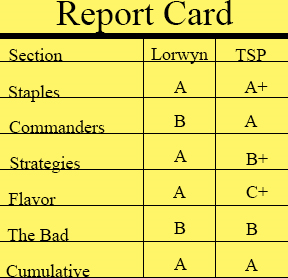
The importance of the Planar Chaos Dragons to the health of the format has been an important factor in its block’s dominance in the competition thus far. The only problem with this mode of thinking is that the Battle Of The Blocks rewards the greatest contribution to the Commander format, and with the printing of the wedge-colored commanders of the Commander product, the impact of the Planar Chaos Dragons on the current state of the game has become muted.
Lorwyn-Shadowmoor block’s domination of the Staples section and importance to tribal, blink, enchantment, and many other archetypes is irreplaceable in all of Commander. The fact that a single block could contribute so much to a myriad of different deck types is where Lorwyn-Shadowmoor truly shines. If each of these blocks were removed from the game, the greatest loss to the Commander format would be felt from cards like Reveillark, Door of Destines, and the multicolored lords of Shadowmoor-Eventide. Staples can be replaced; cards like Door of Destinies and Reveillark only come once in a lifetime.
Even with a strong win in the Staples section and a great showing in the Commanders section, Lorwyn-Shadowmoor block wins over the resilient Time Spiral block as the greatest block for the Commander format. The contribution of this folklore-based set to the best casual format ever created is undeniable and will be remembered for a very long time.
Thank you for following along with me on this journey through the Battle of the Blocks! I hope you enjoyed these articles as much as I did in writing them. I think the true victor was found at the end of the competition, but Theros block is already starting to climb the rungs and Journey into Nyx hasn’t even reached the multiplayer table yet.

